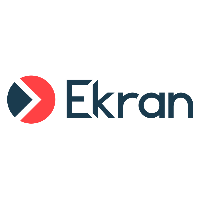Using the System (Checklist)
Using the system involves working with the following main features and functionality, which includes:
1. Assigning endpoint licenses to Clients: Available licenses are automatically assigned to Clients during their first connection to the Application Server. If a license has not been assigned to the Client, you need to assign it manually.
2. Assigning PAM seat licenses to PAM users: PAM (also known as Password Management) seat licenses need to be assigned to PAM users (on the User Mangement tab) for these users to be able to use the PAM (Privileged Access Management) functionality.
3. Adding Client groups: Client groups allow you to grant access for your users to multiple Clients simultaneously, without needing to grant them access to all Clients.
4. Adding users / user groups and defining their permissions: To allow other users to use the Management Tool, you can create new users and define their permissions in the Management Tool.
5. Defining the Client configuration and the Client group configuration.
6. Password Management (PAM): Allows you to configure, manage, and use PAM (Privileged Access Management) secrets.
7. Account Discovery (PAM): Allows users to add and run account discovery rules to scan the network so as to find privileged accounts, and then onboard the accounts found into PAM (Privileged Access Management) secrets.
8. Managing alerts: Alerts are used to notify investigators of a specific activity (potentially harmful/forbidden actions) on the target computers with Clients installed on them. You can create, assign, import, and export alerts. When Syteca is installed, it comes with a library of predefined alerts.
9. Creating USB monitoring rules: USB monitoring allows you to detect the fact that a USB device has been plugged into a computer on which a Windows Client is installed. You can view information on devices detected, receive notifications about them, and block USB devices.
10. Viewing the monitoring results in the Management Tool: The monitored data received from Client computers can be viewed in the Management Tool’s Session Viewer.
11. Exporting sessions from the Session Viewer: You can export sessions in encrypted form to view Client sessions on any computer, even without access to the Management Tool.
12. Receiving alert notifications: Notifications on alert events are received via the Tray Notifications application and by email. These notifications are also displayed in the Windows notification area.
13. Generating reports: User activity can be viewed and analyzed with the assistance of reports generated using the Management Tool. You can schedule reports to be generated and sent by email at specified times or generate ad hoc reports manually using the Report Generator.
14. Dashboards: Statistics data can be analyzed on various measures of user productivity displayed in the form of convenient, interactive and individually-customizable charts.
15. Managing the database: Not to run out of space on the computer where the database is stored, it is recommended to clean up and archive the database periodically, by deleting old monitored data from it. You can enable database archiving and cleanup and then access the archived data at any time later using the Management Tool. In addition, you can remove any unnecessary uninstalled Clients from the database.
16. Enabling Multi-Tenant mode, adding new tenants, and granting the required number of licenses to them.
